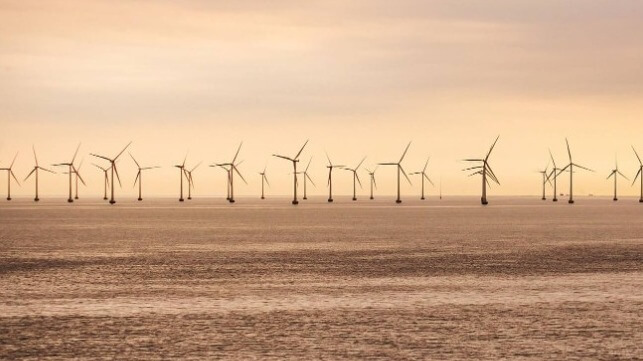Global Offshore Wind Capacity to Top 500 GW by 2040

Despite 2023 being a turbulent year for the offshore wind industry, recent estimates by the energy research firm Rystad show that new capacity additions will grow by nine percent to over 11 GW by the end of this year. Rystad projects that the growth of the global offshore wind sector will continue at a steady pace, with installations (excluding the People’s Republic of China) expected to exceed 520 GW by 2040.
Europe will play a critical role in this growth, relying heavily on floating wind. By 2040, the continent is projected to account for more than 70 percent of global floating wind installations. As a result, floating wind capacity in Europe is expected to approach 90 GW by 2040. The UK, Portugal and France will be at the forefront of this development.
Asia will also play a key role in advancing floating wind as a mature technology. The region, excluding mainland China, will capture a share of 20 percent of global installations by 2040, reaching a capacity of 17 GW.
However, the floating wind sector is facing short-term supply chain constraints, similar to the bottom-fixed segment. These challenges are likely to hinder development of floating wind technology, with capacity estimates of less than 7 GW by 2030. Looking ahead, most of the growth is anticipated to happen between 2030 and 2035. During this period, Europe is expected to add 20 GW of floating wind, while Asia, excluding mainland China, will add up to 5GW.
“Supply chain bottlenecks present significant challenges to the industry’s further expansion. While ambitious targets boost investor confidence, it is crucial to address logistical issues to ensure that offshore wind can successfully take a key role in the energy transition,” said Petra Manuel, Senior Offshore Wind Analyst, Rystad Energy.

that matters most
Get the latest maritime news delivered to your inbox daily.
Meanwhile, in the bottom-fixed market, the UK, Germany and the Netherlands will emerge as the three dominant players. This is because of their proximity to the North Sea and extensive maritime areas, which provide a strong foundation for large-scale installations. The three countries are projected to account for a total of 150 GW of installed capacity by 2040. The U.S will follow with less than 40 GW, contingent on its political landscape.
But between 2025 and 2030, the Americas - led by the U.S. - will experience significant growth, beginning with close to 2 GW of installed capacity in 2025.
